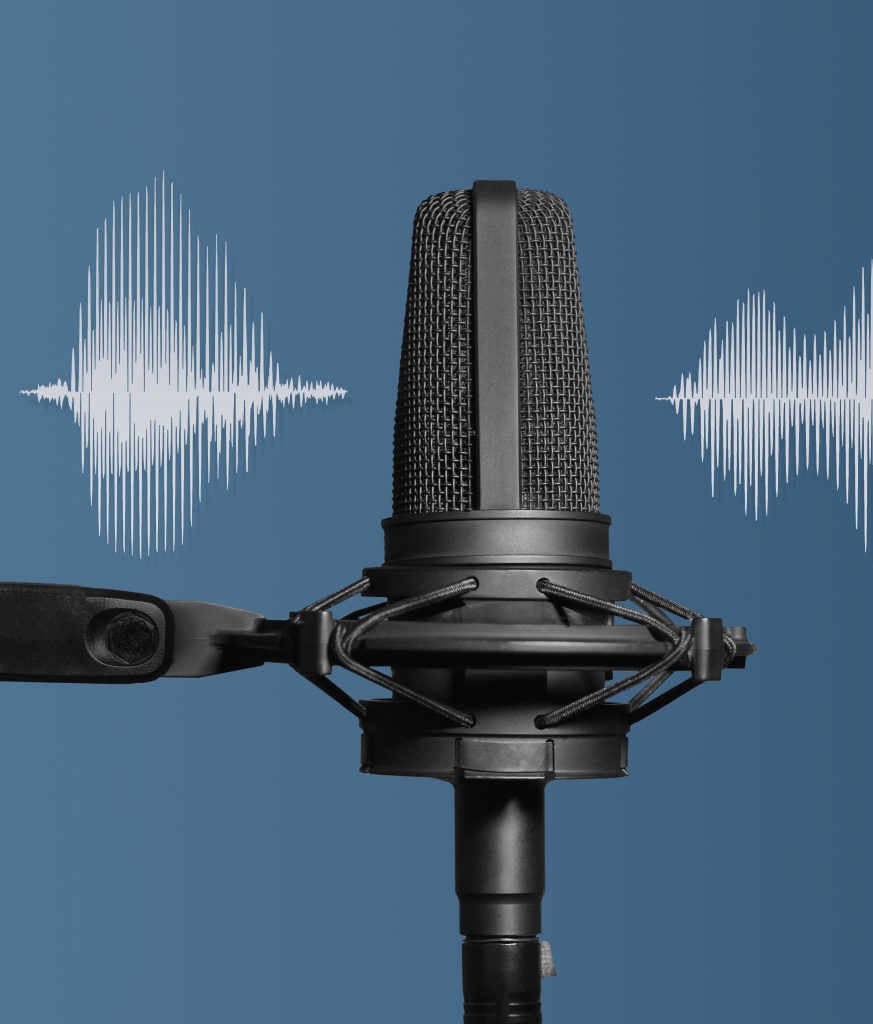Podcasting is still growing at a fast clip – two times faster than digital advertising overall.
But it’s in the midst of a slowdown, in part because programmatic podcast advertising technology is still in its infancy. The slump has led to a slew of layoffs and canceled podcasts from NPR, Spotify, iHeart Media, SiriusXM and Sony Music.
In a sign of the podcasting pullback, Thursday’s IAB Podcast Upfront took place over one day, versus last year’s three-day event.
Still, the mood was hopeful, as presenters focused on their content, brand safety and first-party data. Audio companies trotted out their celebrity podcasters from some of their most popular shows. Reps included Conan O’Brien and Kelly Ripa for SiriusXM and Emily Ratajkowski and Jesse Tyler Ferguson for Sony Music, who were brought out as brand spokespeople to attract advertisers and drive continued podcasting growth.
US podcast advertising revenues increased 26% YOY to $1.8 billion in 2022 and are expected to reach $4 billion by 2025, according to the seventh annual IAB US Podcast Advertising Revenue study. These numbers are lower than the IAB’s expectations from the study’s sixth edition, which predicted that advertising revenues would hit $2.1 billion in 2022 and $4.2 billion in 2024.
“For the second year in a row, podcasting is the No. 1 growth channel across all digital media,” said Eric John, VP of IAB’s Media Center.
An unlikely source of brand safety
Artificial intelligence made its biggest appearance in a presentation on AI Brand Integrity Daily Measurement (AB Daily), a product from digital audio brand safety and suitability startup Barometer and AI-powered marketing automation platform ArtsAI.
“Brand standards are nuanced, and [brand safety] solutions need to be flexible and nuanced,” said Barometer CEO Tamara Zubatiy.
AB Daily combines ArtsAI’s impression-tracking pixel and Barometer’s Brand Integrity Cloud to furnish in-flight show and episode-level suitability monitoring. It also analyzes a podcast’s individual episodes line by line against a specific brand’s safety and suitability standards.
With episode-level breakdowns, advertisers who might be hesitant about brand associations with a show overall could run ads on select episodes.
“We can create exceptions for rules for factors like genre, IAB tag context or host sentiments,” Zubatiy said. Advertisers can set nuanced preferences, like, “I’m OK with high levels of crime and death in true crime and in the news, but maybe not in other contexts,” she said.
Since brand standards can change, advertisers are encouraged to continuously refine their preferences.
ArtsAI CRO Erik Lundberg also teased an upcoming offering from the two companies that aims to bring “real-time brand safety” to podcast advertising.
While ad spend for display and digital video clock in at $64 billion and $47 billion a year, respectively, podcast ad spend stands at a relatively puny $2 billion due to a lack of real-time brand safety checks, Lundberg said.
An ArtsAI video ad-serving template (VAST) audio tag will serve up ad creative if Barometer’s brand safety scoring engine determines the content is safe. If it’s unsafe, it will automatically serve the next ad in the attribution priority waterfall or a PSA ad. The VAST audio tag can be run using AI personalization for ad creative, Lundberg said, which increases campaign performance by an average of 53%, according to their benchmarking.
Both AB Daily and the forthcoming product are available for direct buys and programmatic.
The life of the targeting party
Podcast hosting and analytics platform Acast hyped its first-party data tool as a way for advertisers to target audiences with greater contextual relevance.
“Advertisers are missing the opportunity to reach 88% of the addressable podcast audience,” said Christiana Brenton, Acast’s US director of sales and brand partnerships.
Forty-four percent of all podcast ad investment goes to the top 500 shows, ignoring most of the more than 2.3 million English-speaking podcasts in the US, according to Brenton. The top 500 shows only account for 12% of monthly audience reach, so concentrating ad budgets on only these shows results in inflated CPMs and higher ad loads.
These insights came from data analyzed by podcast database Podchaser, which Acast acquired last year, and Magellan AI.
Last year, Acast worked with LiveRamp and Adobe so it could use first-party data to target audiences. It also partnered with The Trade Desk, sharing content and genre signals with the DSP to integrate first-party data into podcast campaigns.
When it comes to podcast advertising ROI, “it’s not about the size of the show,” Brenton said, but “the depth of the audience relationship.”
















